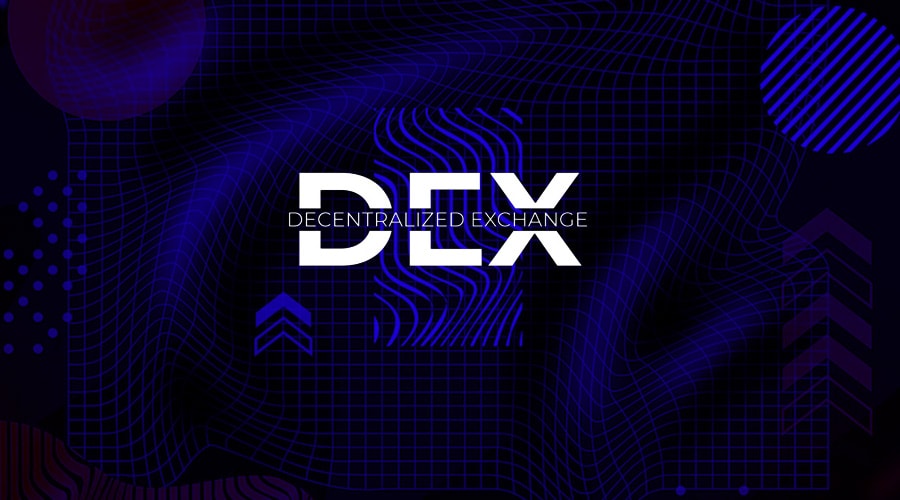Decentralized exchanges (DEXs) have gained popularity in recent years as they offer several advantages over traditional centralized exchanges (CEXs). Unlike CEXs, DEXs operate on a peer-to-peer (P2P) basis, meaning there is no intermediary to control the exchange process. The decentralization of DEXs offers users greater control over their assets and eliminates the risk of hacks and data breaches associated with centralized exchanges. Cross-chain interoperability, on the other hand, enables different blockchains to communicate and interact with each other. This article will explore the relationship between decentralized exchanges and cross-chain interoperability and how they work together to improve the blockchain ecosystem.
What is Decentralized Exchange (DEX)?
A decentralized exchange (DEX) is a P2P trading platform that allows users to trade cryptocurrencies without the need for a centralized authority. DEXs operate on a blockchain network, making them more secure and transparent compared to centralized exchanges. DEXs offer several benefits, including:
- Greater Security: DEXs eliminate the need for a centralized authority, meaning there is no single point of failure or risk of data breaches or hacks.
- Lower Costs: DEXs do not require intermediaries, which reduces transaction fees and other costs associated with trading.
- Greater Control: DEXs enable users to have full control over their assets, eliminating the need for a middleman to facilitate transactions.
What is Cross-Chain Interoperability?
Cross-chain interoperability is the ability of different blockchain networks to communicate and interact with each other. This interaction allows users to transfer assets from one blockchain network to another without the need for intermediaries. Cross-chain interoperability has the following benefits:
- Greater Liquidity: Cross-chain interoperability allows users to access a wider range of assets, thereby increasing liquidity and improving the overall trading experience.
- Reduced Risk: Cross-chain interoperability enables users to reduce risks associated with one particular blockchain network. Users can move their assets to other networks in the event of a network outage, hack or other forms of disruptions.
- Greater Efficiency: Cross-chain interoperability reduces the need for intermediaries, resulting in faster and cheaper transactions.
How Decentralized Exhchanges and Cross-Chain Interoperability Work Together
DEXs and cross-chain interoperability work together to improve the blockchain ecosystem in several ways. Firstly, cross-chain interoperability allows DEXs to access a wider range of assets, thereby increasing liquidity and providing more trading opportunities for users. Secondly, cross-chain interoperability enables DEXs to reduce risks associated with one particular blockchain network. For instance, if a blockchain network experiences a network outage or hack, users can quickly move their assets to another network via cross-chain interoperability. This reduces the risk of loss of assets and improves the overall security of the DEX.
Thirdly, cross-chain interoperability enables DEXs to be more efficient by reducing the need for intermediaries. With cross-chain interoperability, users can transfer assets from one blockchain network to another without the need for a middleman. This results in faster and cheaper transactions, providing a more seamless trading experience for users.
Challenges Facing Decentralized Exchanges and Cross-Chain Interoperability
Despite the benefits of DEXs and cross-chain interoperability, several challenges still exist. One of the major challenges facing DEXs is liquidity. Unlike centralized exchanges, which have a high trading volume and liquidity, DEXs often suffer from low trading volumes and liquidity. This makes it difficult for traders to find matching trades, and it can also result in increased volatility in the price of assets.
Another challenge facing cross-chain interoperability is the lack of standardization across different blockchain networks. Each blockchain network has its own protocols and standards, making interoperability between them difficult. This results in a lack of seamless communication between different networks, which can lead to delays and higher transaction costs.
Another challenge facing DEXs and cross-chain interoperability is the issue of scalability. As blockchain networks grow in size, they often experience scalability issues, resulting in slower transaction times and higher transaction costs. This can make it difficult for DEXs to handle a large volume of trades, and it can also make cross-chain interoperability more challenging.
Solutions for Improving Decentralized Exchanges and Cross-Chain Interoperability
Several solutions exist to address the challenges facing DEXs and cross-chain interoperability. One solution is the development of layer 2 solutions, which aim to increase the speed and scalability of blockchain networks. Layer 2 solutions operate on top of existing blockchain networks and can handle a large volume of transactions at a much lower cost. These solutions can also be used to facilitate cross-chain interoperability, enabling different blockchain networks to communicate with each other more efficiently.
Another solution for improving DEXs and cross-chain interoperability is the development of standardized protocols and interfaces. Standardized protocols can help to improve communication between different blockchain networks, making cross-chain interoperability more seamless. This can also help to reduce transaction costs and increase the speed of transactions.
Conclusion
In conclusion, decentralized exchanges and cross-chain interoperability are two important components of the blockchain ecosystem. DEXs offer several advantages over centralized exchanges, including greater security, lower costs, and greater control. Cross-chain interoperability enables different blockchain networks to communicate and interact with each other, providing greater liquidity, reduced risk, and greater efficiency. While several challenges exist, solutions such as layer 2 solutions and standardized protocols offer a way forward for improving DEXs and cross-chain interoperability. As the blockchain ecosystem continues to grow, DEXs and cross-chain interoperability are likely to become even more important, providing greater benefits to users and contributing to the overall success of the blockchain industry.
I’m a highly experienced and successful crypto author with over 10 years of experience in the field. I have written for some of the most popular crypto publications, including Bitcoin Magazine, CoinDesk, and Crypto Insider. I have also been featured in major mainstream media outlets such as Forbes, Wall Street Journal, and Business Insider.
